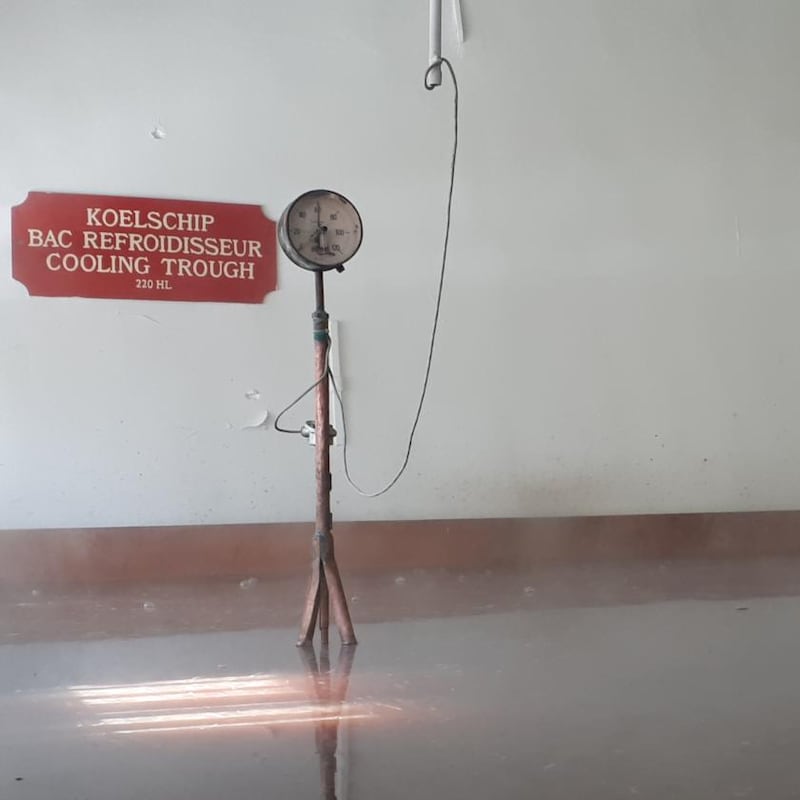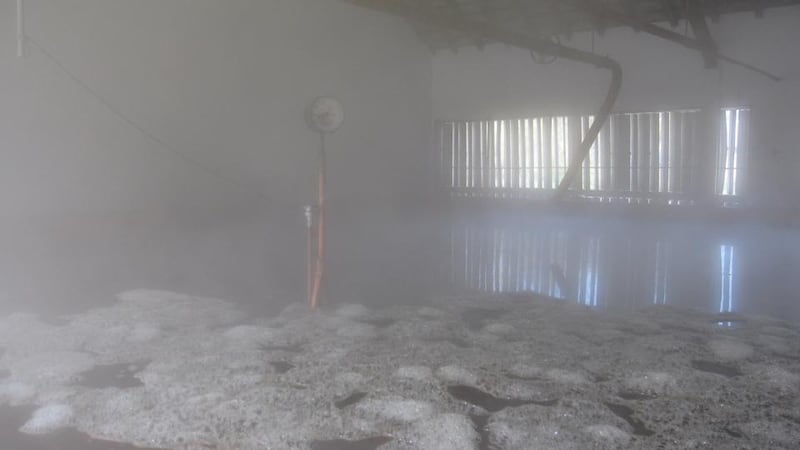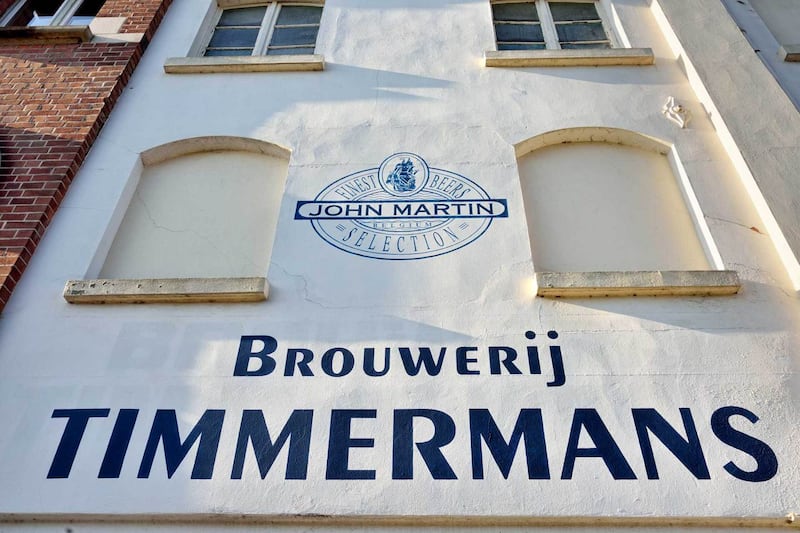Watching a "cool ship" in operation is strangely captivating. This large open vat of liquid, a bit like a shallow swimming pool, is used in Belgium for making lambic beer. It's part of an ancient method of spontaneous fermentation, where the wort, as the liquid is called before it becomes beer, is exposed to the open air to collect wild yeast and bacteria floating around in it.
On a recent visit to the Timmermans brewery in Itterbeek, a few kilometres from the centre of Brussels, we were led past huge copper tanks and an ancient grindstone and along a narrow walkway to a small opening where the cool ship was quietly working its magic.
Looking across it is like being on the edge of a misty indoor lagoon, with steam rising in little drifts from the frothing and fragrant liquid. And through the slatted windows comes a key ingredient, air from the Zenne Valley, across the bubbling vat, and mixing with the sweet, grainy smell of wort.



The Timmermans "koelschip", or cooling trough, dates back to 1935, when it was presented as a wedding gift to the younger generation of brewers in the family business. Operational since 1702, and now part of the John Martin group, Timmermans is in Pajottenland, the region of Belgium that is also home to Boon, Oud and the other lambic breweries.
Wild fermentation takes place in the cooler months – the season ends about now – and after the beer is taken from the cool ship it’s left to age in barrels or large foudres. Kriek lambic is made with sour cherries – there are plenty of variations, made with peach, raspberries and even walnuts – while a gueuze is a blend of one-year-old and three-year-old lambic.
Many lambic beers are exported worldwide, and you'll find a few, including Cantillon and Lindemans, on the shelves of good Irish off-licences. They're worth seeking out if you haven't yet experienced lambic's funky, sour and very distinctive taste – the cool ship effect.












